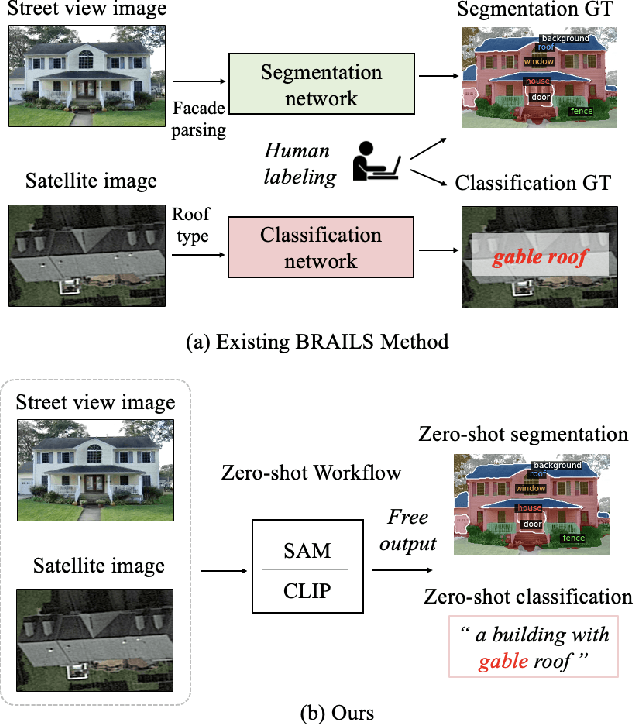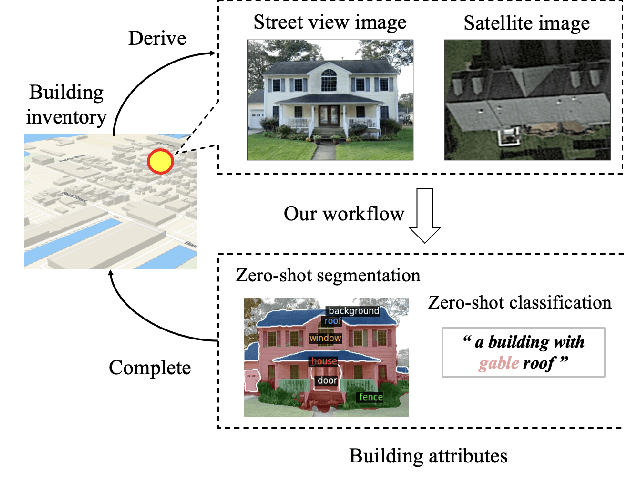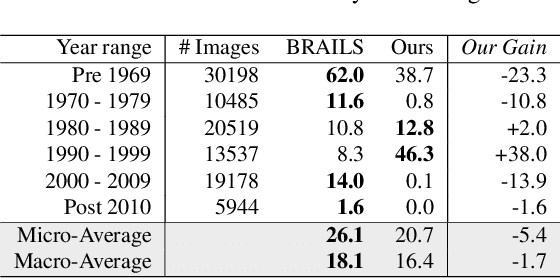Frank Mckenna
Zero-shot Building Attribute Extraction from Large-Scale Vision and Language Models
Dec 19, 2023



Abstract:Existing building recognition methods, exemplified by BRAILS, utilize supervised learning to extract information from satellite and street-view images for classification and segmentation. However, each task module requires human-annotated data, hindering the scalability and robustness to regional variations and annotation imbalances. In response, we propose a new zero-shot workflow for building attribute extraction that utilizes large-scale vision and language models to mitigate reliance on external annotations. The proposed workflow contains two key components: image-level captioning and segment-level captioning for the building images based on the vocabularies pertinent to structural and civil engineering. These two components generate descriptive captions by computing feature representations of the image and the vocabularies, and facilitating a semantic match between the visual and textual representations. Consequently, our framework offers a promising avenue to enhance AI-driven captioning for building attribute extraction in the structural and civil engineering domains, ultimately reducing reliance on human annotations while bolstering performance and adaptability.
Building Information Modeling and Classification by Visual Learning At A City Scale
Oct 14, 2019



Abstract:In this paper, we provide two case studies to demonstrate how artificial intelligence can empower civil engineering. In the first case, a machine learning-assisted framework, BRAILS, is proposed for city-scale building information modeling. Building information modeling (BIM) is an efficient way of describing buildings, which is essential to architecture, engineering, and construction. Our proposed framework employs deep learning technique to extract visual information of buildings from satellite/street view images. Further, a novel machine learning (ML)-based statistical tool, SURF, is proposed to discover the spatial patterns in building metadata. The second case focuses on the task of soft-story building classification. Soft-story buildings are a type of buildings prone to collapse during a moderate or severe earthquake. Hence, identifying and retrofitting such buildings is vital in the current earthquake preparedness efforts. For this task, we propose an automated deep learning-based procedure for identifying soft-story buildings from street view images at a regional scale. We also create a large-scale building image database and a semi-automated image labeling approach that effectively annotates new database entries. Through extensive computational experiments, we demonstrate the effectiveness of the proposed method.
 Add to Chrome
Add to Chrome Add to Firefox
Add to Firefox Add to Edge
Add to Edge